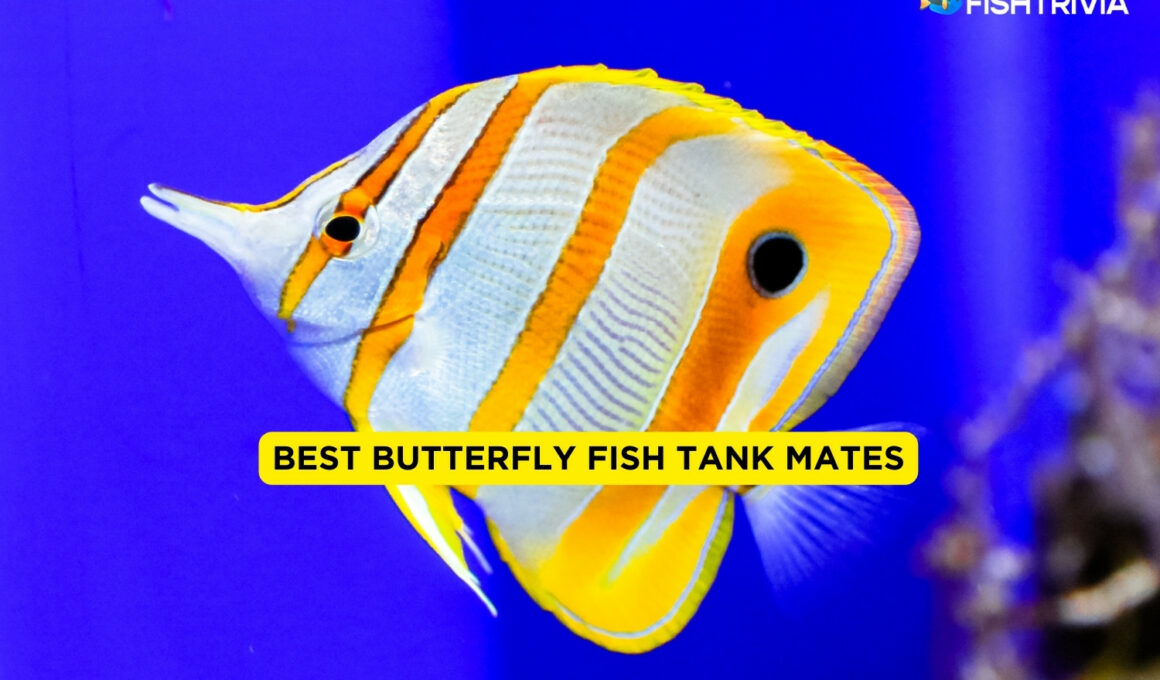In this article Show
If you’re considering adding a butterfly fish to your tank or already cherish one, you know that creating the right environment for them is crucial. This includes selecting the most compatible tank mates.
In this post, we’re focusing on the 11 best companions for your butterfly fish, ensuring a harmonious and thriving aquatic community.
Understanding the behavior and needs of butterflyfish is key to a successful aquarium. These fish are known for their vivid colors and patterns, which can bring a dynamic aesthetic to any tank. However, their well-being goes beyond just visual appeal.
Selecting the right tank mates is not just about avoiding conflict; it’s about creating a balanced ecosystem where all inhabitants can coexist peacefully and healthily.
As an experienced fish keeper, I’ll guide you through choosing the perfect companions for your butterfly fish. We’ll explore options that are not only visually compatible but also share similar environmental requirements and temperaments.
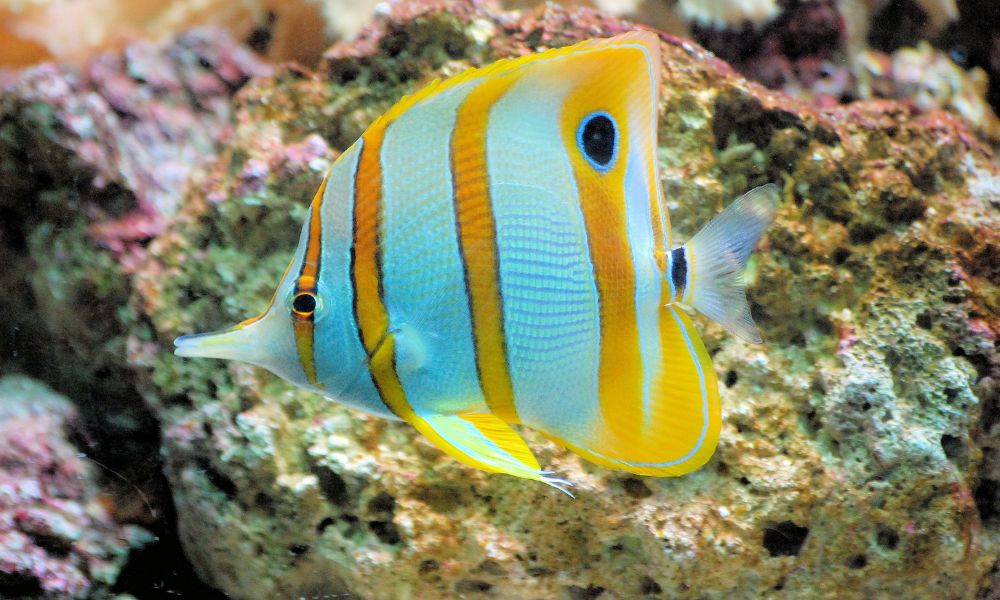
Criteria for Choosing Aquarium Tank Mates
Selecting the right tank mates for your aquarium is crucial for maintaining a healthy and harmonious environment. When it comes to pairing with butterfly fish, or any other species, consider the following factors:
1. Water Conditions
- Temperature, pH, and Salinity: Ensure that the chosen tank mates thrive in the same water conditions as your butterfly fish. Similar requirements for temperature, pH levels, and salinity are essential for the well-being of all inhabitants.
- Water Quality: Regular maintenance of water quality is vital. Fish that are sensitive to changes in water parameters may not be the best choice for beginner aquariums.
2. Temperament and Behavior
- Peaceful vs. Aggressive: Assess whether the potential tank mate has a peaceful or aggressive nature. It’s important to avoid species that are known to be overly territorial or aggressive towards others.
- Swimming Levels and Space: Consider how the fish uses the tank space. Ideal tank mates should occupy different levels of the tank to minimize territorial disputes.
3. Size and Growth Potential
- Size Compatibility: Choose tank mates that are proportionate in size to your butterfly fish. Extremely larger or smaller fish may lead to predatory behavior or bullying.
- Growth Expectations: Be aware of the growth potential of the chosen species. Fish that grow significantly larger may require more space in the future.
4. Importance of Compatibility
- Dietary Needs: Ensure that dietary needs are compatible. Tank mates with vastly different feeding habits can lead to competition and stress.
- Social Behavior: Some fish prefer to be in school, while others are solitary. Consider these social needs to prevent stress and aggression.
Best Butterfly Fish Tank Mates
1. Clownfish
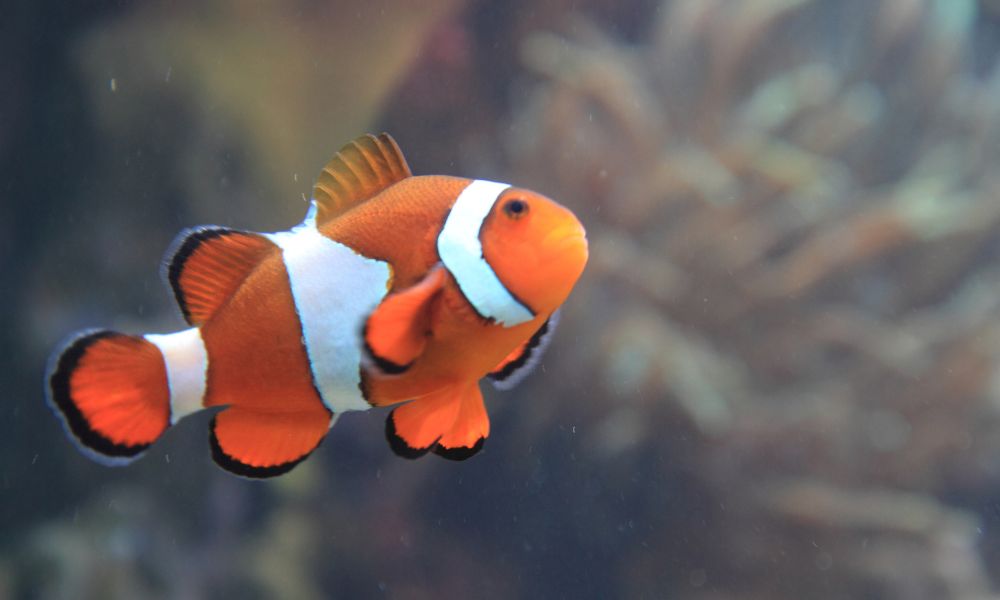
| Characteristics | Details |
| Size | 3 to 4 inches (7 to 10 cm) |
| Diet | Omnivore |
| Temperament | Peaceful |
| Care Level | Easy |
| Minimum Tank Size | 20 gallons (75 liters) |
Clownfish are vibrant and hardy, known for their striking orange and white patterns. Despite their small size, they are full of personality and can become a centerpiece in any aquarium.
With their peaceful nature, clownfish can coexist comfortably with butterflyfish, as they don’t compete for territory. This compatibility is beneficial for maintaining a harmonious tank environment.
Clownfish thrive in stable water conditions. They prefer a varied diet, consisting of both meaty foods and some greens. Regular feeding and maintaining good water quality are key to their health. They are also known to form symbiotic relationships with certain anemones, which can be a fascinating aspect to observe in a home aquarium.
2. Dwarf Angelfish
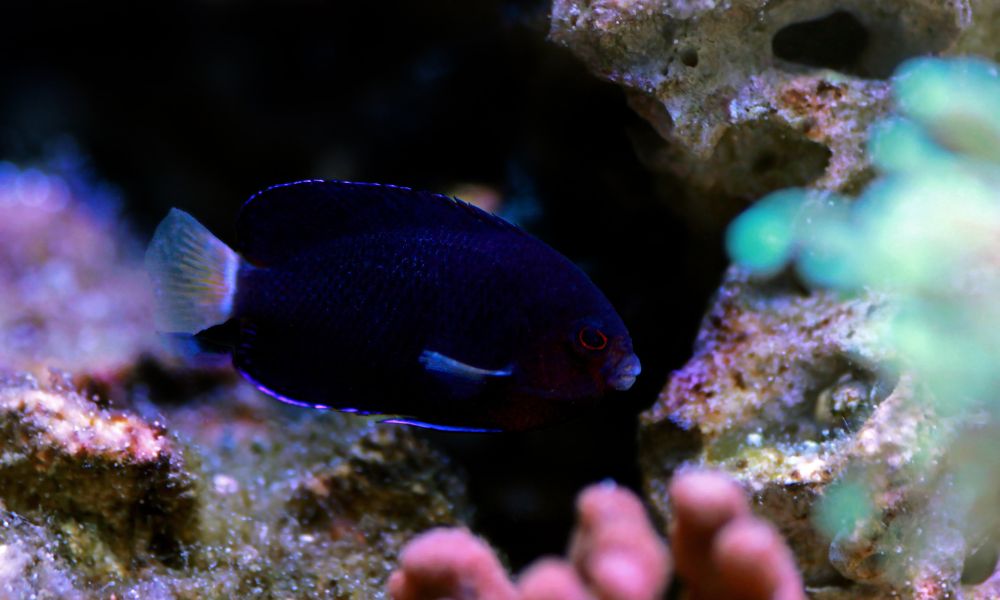
| Characteristics | Details |
| Size | 4 to 6 inches (10 to 15 cm) |
| Diet | Omnivore (Algae and Protein) |
| Temperament | Semi-aggressive |
| Care Level | Moderate |
| Minimum Tank Size | 30 gallons (114 liters) |
Dwarf Angelfish are small, beautifully colored fish that bring a vibrant dynamic to any aquarium. They are generally peaceful but can show semi-aggressive tendencies, especially in smaller tanks or with overcrowded conditions.
They have similar dietary needs to butterfly fish, preferring a mix of algae and protein-based foods. Their swimming patterns and levels in the tank are also comparable, making them a suitable companion for butterfly fish in a well-sized aquarium.
These fish require hiding spaces in their habitat, as they like to retreat and feel secure. A diet rich in algae and proteins is essential for their health and coloration. Regular tank maintenance and monitoring of water parameters are important, as Dwarf Angelfish can be sensitive to changes in their environment.
3. Banggai Cardinalfish
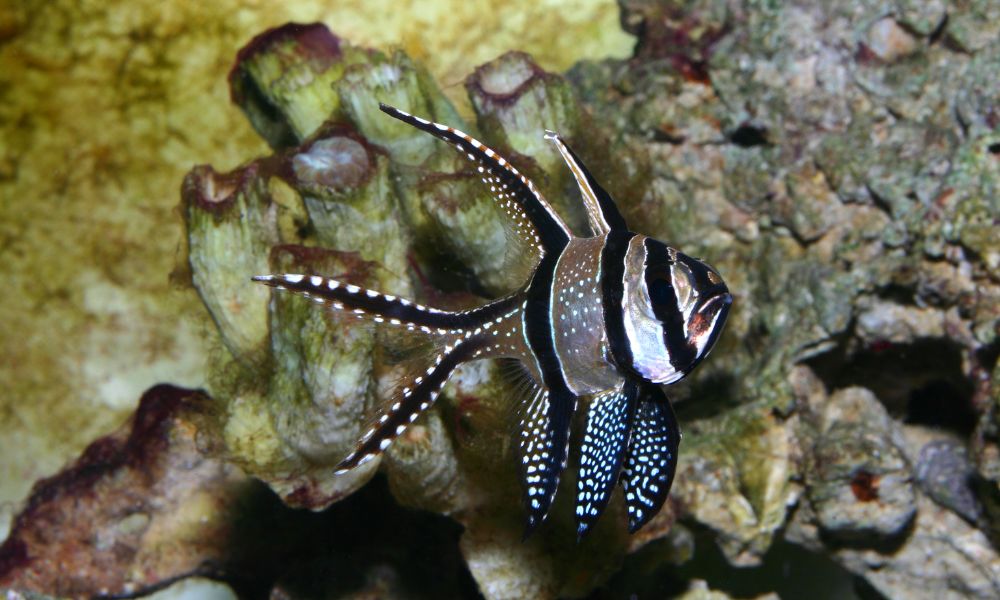
| Characteristics | Details |
| Size | 2 to 3 inches (5 to 8 cm) |
| Diet | Carnivore |
| Temperament | Peaceful |
| Care Level | Moderate |
| Minimum Tank Size | 30 gallons (114 liters) |
The Banggai Cardinalfish is known for its striking appearance, marked by a distinct combination of black, white, and silver. Small in size and peaceful in nature, these fish are a delightful addition to any home aquarium.
Their non-aggressive demeanor makes them excellent tank mates for butterfly fish. They prefer the lower regions of the tank, which naturally minimizes territorial conflicts with other mid-water dwellers like the butterfly fish.
Banggai Cardinalfish benefit from a varied diet, primarily consisting of small, meaty foods. They thrive in environments with plenty of hiding spots, which mimic their natural habitats and provide a sense of security. Consistent water quality and a well-maintained tank are key to keeping these fish healthy and stress-free.
4. Royal Gramma
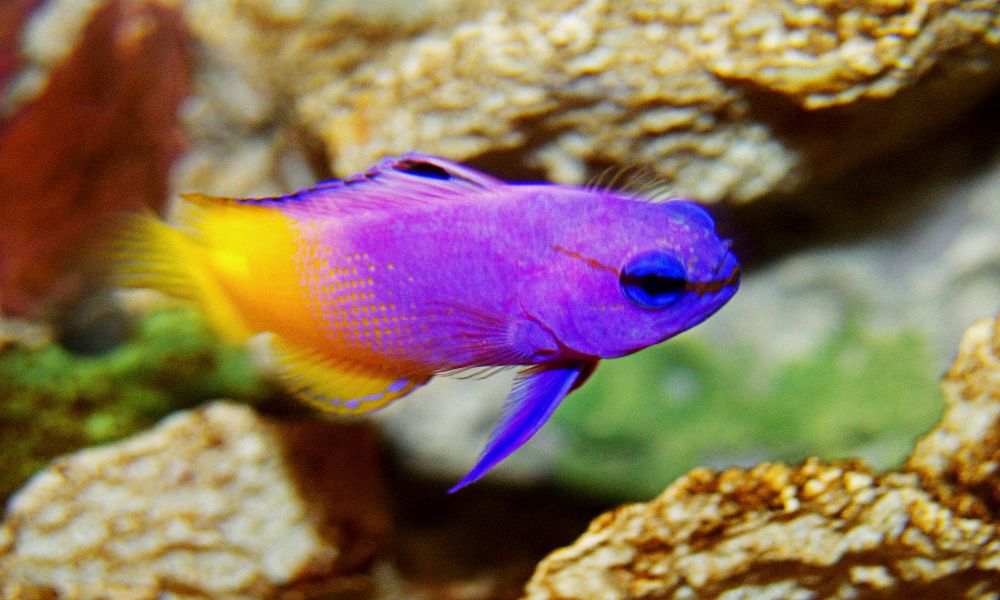
| Characteristics | Details |
| Size | 3 inches (7.5 cm) |
| Diet | Carnivore (Meaty foods, plankton) |
| Temperament | Peaceful |
| Care Level | Easy |
| Minimum Tank Size | 30 gallons (114 liters) |
The Royal Gramma is a small, brightly colored fish, known for its vivid purple front and yellow back. This peaceful species is an excellent addition to any community aquarium, especially one with butterfly fish.
Royal Grammas are adaptive and tend to occupy different parts of the aquarium, preferring to swim and feed in the middle to lower regions. This behavior significantly reduces the chance of territorial disputes with other fish like the butterfly fish, which typically dwell in different tank areas.
These fish need hiding places, such as rockwork or caves, to feel secure in the aquarium. Their diet should include small meaty foods and plankton, which help maintain their brilliant colors and overall health. Regular feeding and maintaining stable water conditions are essential for the well-being of the Royal Gramma.
5. Yellow Tang
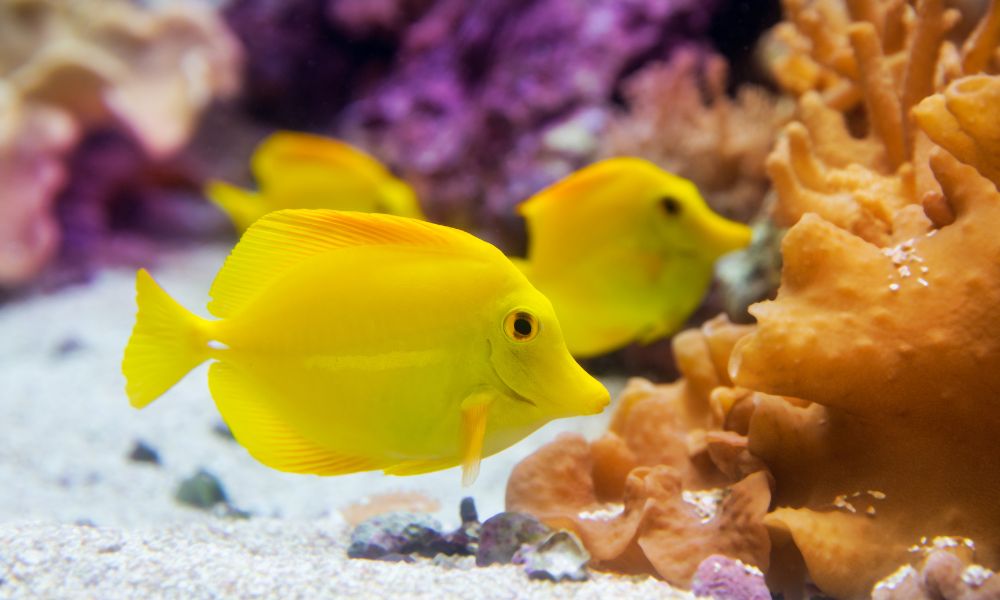
| Characteristics | Details |
| Size | 6 to 8 inches (15 to 20 cm) |
| Diet | Herbivore (Primarily algae) |
| Temperament | Semi-aggressive |
| Care Level | Easy |
| Minimum Tank Size | 75 gallons (285 liters) |
The Yellow Tang is known for its vibrant yellow coloration and active swimming behavior. These fish are not only visually striking but also play a beneficial role in controlling algae growth within the tank.
Yellow Tangs typically occupy different niches in the tank compared to butterfly fish. Their preference for grazing on algae along the rocks and tank surfaces helps minimize food competition and territorial disputes with other species.
Yellow Tangs require a spacious tank to accommodate their active swimming. Their diet should be rich in marine algae, which is crucial for their health and maintaining their bright yellow color. Providing a variety of algae and ensuring a clean, well-filtered tank will help keep these fish thriving.
6. Firefish
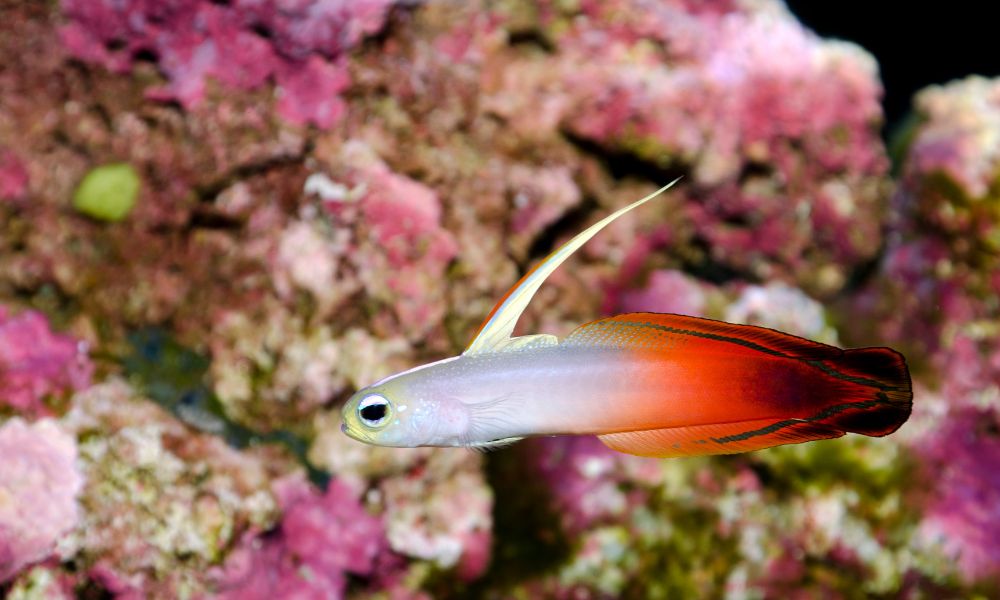
| Characteristics | Details |
| Size | 3 to 4 inches (7 to 10 cm) |
| Diet | Carnivore (Small meaty foods) |
| Temperament | Peaceful, Timid |
| Care Level | Easy |
| Minimum Tank Size | 20 gallons (75 liters) |
Firefish are known for their colorful appearance and shy nature. Their bodies display a mix of vibrant colors, typically white at the front and pink or yellow towards the back, with a striking dorsal fin.
These fish are non-aggressive and tend to prefer different swimming areas than butterfly fish, often staying closer to the bottom of the tank. This behavior makes them excellent tank mates, as they rarely interfere with or compete with other fish for space.
Firefish need a tank with plenty of hiding spots, like rockwork or caves, to feel secure. They thrive in a calm environment with stable water conditions. Their diet should include small, meaty foods, provided in small quantities on a regular basis. Keeping the tank peaceful and well-maintained is key to their well-being.
7. Six-Line Wrasse
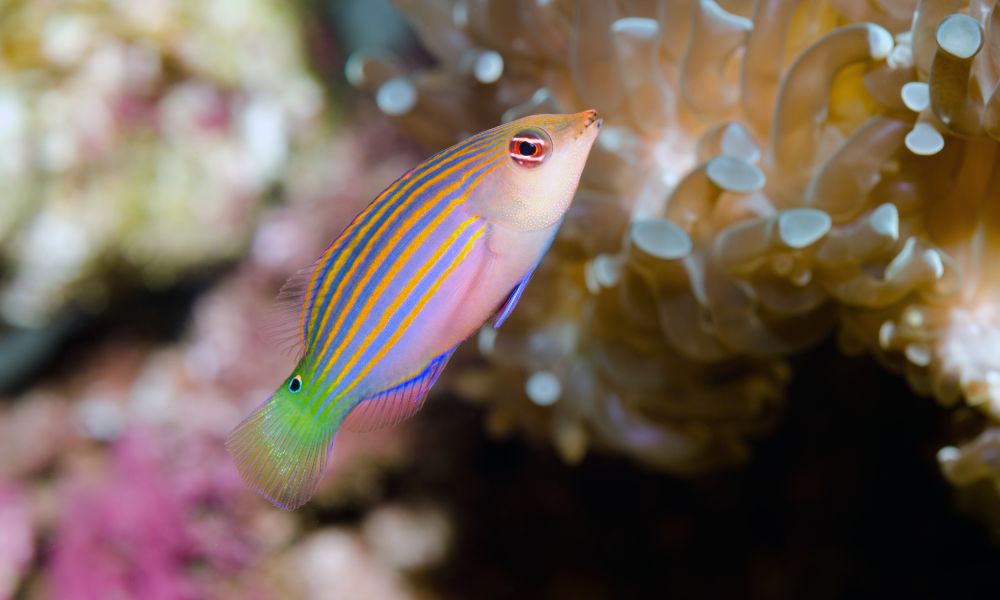
| Characteristics | Details |
| Size | 3 inches (8 cm) |
| Diet | Carnivore (Small invertebrates and zooplankton) |
| Temperament | Peaceful but can be territorial |
| Care Level | Easy |
| Minimum Tank Size | 30 gallons (114 liters) |
The Six-Line Wrasse is a small, vibrant fish, recognized by its six horizontal blue lines across a striking orange body. They are active swimmers and add a dash of dynamism to any tank setup.
This species is particularly beneficial in controlling pests like bristle worms in the aquarium. They do not compete for food with butterfly fish, as their diet mainly consists of small invertebrates and zooplankton.
A varied diet is essential for the Six-Line Wrasse, including quality marine flake foods, small frozen or live meaty foods, and marine pellets. They require plenty of swimming space and a well-structured environment with hiding spots. It’s important to note that while generally peaceful, they can exhibit territorial behavior, so tank size and companion selection should be considered carefully.
8. Cleaner Shrimp
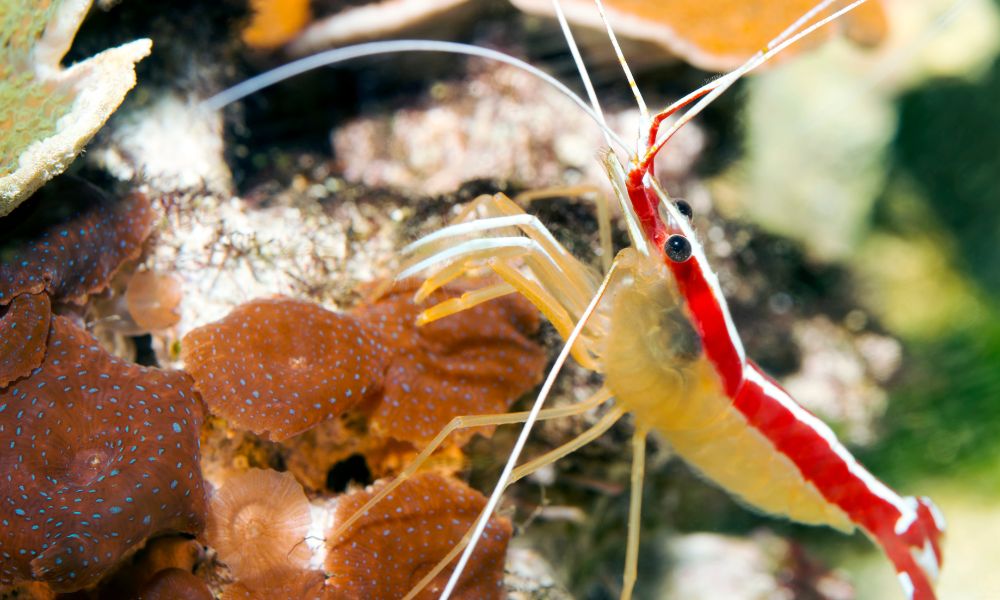
| Characteristics | Details |
| Size | 1.5 to 2 inches (4 to 5 cm) |
| Diet | Scavenger (Leftover food, algae) |
| Temperament | Peaceful |
| Care Level | Easy |
| Minimum Tank Size | 10 gallons (38 liters) |
Cleaner Shrimp are not fish, but they are a highly beneficial addition to any saltwater aquarium. Known for their distinct red and white stripes, these shrimp play a crucial role in maintaining the health of other tank inhabitants by cleaning parasites and dead skin.
They are peaceful and coexist well with a variety of fish, including butterfly fish. Cleaner Shrimp actively provide a cleaning service to other tank inhabitants, making them a valuable part of the aquarium ecosystem.
Cleaner Shrimp need hiding places in the tank, such as caves or overhangs, where they can retreat if they feel threatened. They feed on leftover food particles and algae, helping to keep the tank clean. Regular feeding with a balanced diet and maintaining stable water conditions are essential for their health and well-being.
9. Coral Beauty Angelfish
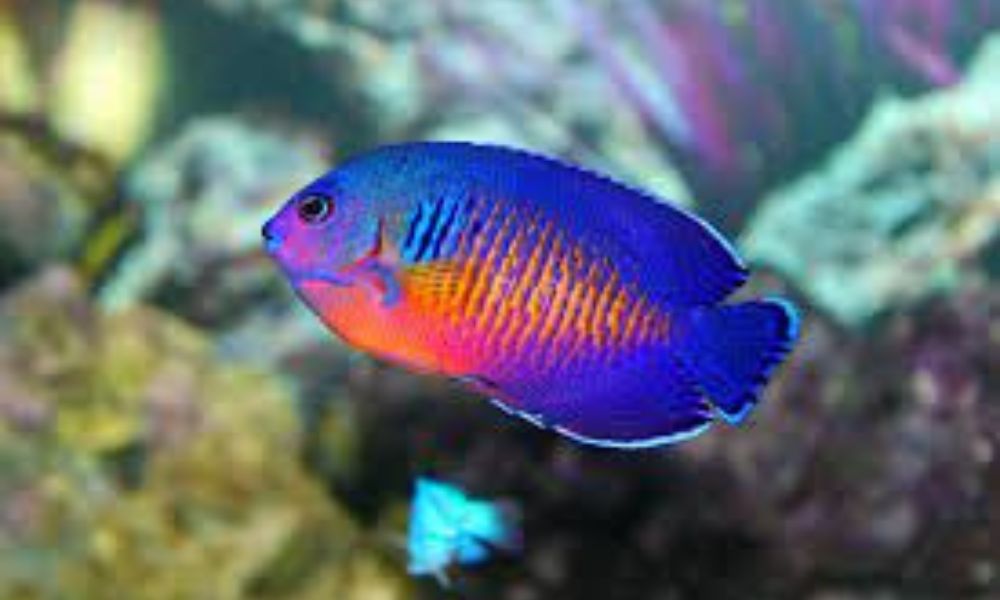
| Characteristics | Details |
| Size | 4 inches (10 cm) |
| Diet | Omnivore (Algae and meaty foods) |
| Temperament | Semi-aggressive |
| Care Level | Moderate |
| Minimum Tank Size | 70 gallons (265 liters) |
The Coral Beauty Angelfish is a small yet striking fish, known for its vibrant blue and orange coloration. While generally peaceful, they can exhibit semi-aggressive behavior, especially in smaller or crowded tanks.
Though they can be semi-aggressive, Coral Beauty Angelfish usually coexist well with butterfly fish when introduced properly into a well-sized and well-structured tank. It’s important to monitor their interaction, especially in the initial stages.
A varied diet that includes both algae and meaty foods is essential for maintaining the health and coloration of the Coral Beauty Angelfish. They also require plenty of hiding spaces in the tank, such as rock formations or plants, to retreat when they feel stressed or need privacy.
10. Blue Green Chromis
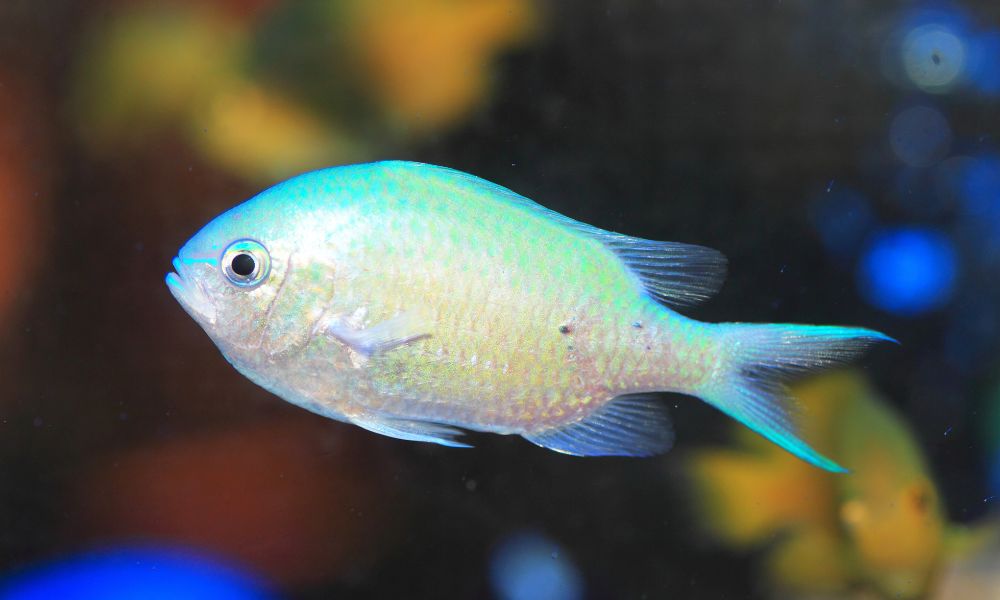
| Characteristics | Details |
| Size | 3 to 4 inches (7.5 to 10 cm) |
| Diet | Omnivore (Small meaty foods, plankton) |
| Temperament | Peaceful |
| Care Level | Easy |
| Minimum Tank Size | 30 gallons (114 liters) |
Blue Green Chromis are known for their peaceful nature and striking blue-green coloration. They are schooling fish that add a vibrant and dynamic movement to the aquarium, enhancing its visual appeal.
Their schooling behavior provides a captivating display without disturbing other fish in the tank, making them an excellent choice for a community aquarium with butterfly fish. They tend to swim in the upper parts of the tank, which reduces the chances of territorial disputes.
Blue Green Chromis thrive in groups, so it’s recommended to keep them in a school of at least five. They require a diet that includes small meaty foods and plankton. A well-maintained tank with stable water conditions and regular feedings will ensure their health and vibrancy.
11. Goby Fish (Various Species)
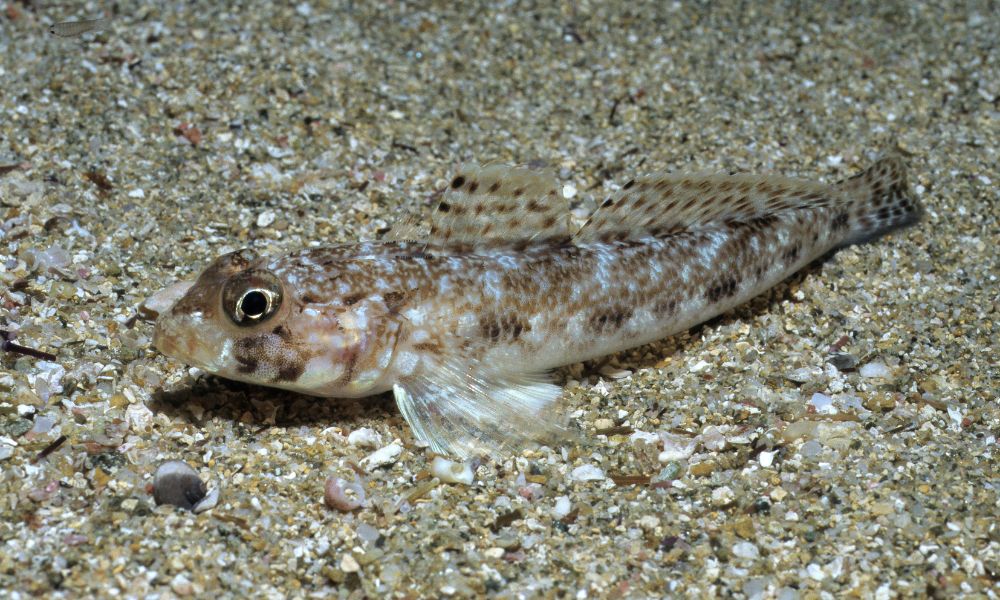
| Characteristics | Details |
| Size | 1 to 4 inches (2.5 to 10 cm), varies by species |
| Diet | Carnivore/Omnivore (Small invertebrates, algae) |
| Temperament | Peaceful to Semi-aggressive, varies by species |
| Care Level | Moderate, varies by species |
| Minimum Tank Size | 10-30 gallons (38-114 liters), varies by species |
Goby Fish encompass a variety of species, each with its own unique appearance and size. These small, bottom-dwelling fish are known for their diverse colors and patterns. They are fascinating to observe and can add a lot of character to a home aquarium.
Gobies typically occupy the bottom levels of the tank, which helps reduce competition for space with other fish, including butterfly fish. Their varied behaviors and requirements mean that there’s likely a goby species suitable for most community aquariums.
Most Goby species require a tank with a sandy substrate, which they use for burrowing and sifting for food. Their diet should include small invertebrates and algae. Some species may also accept high-quality flake and pellet foods. It’s important to research the specific needs of the species you choose to ensure a healthy and compatible tank environment.






